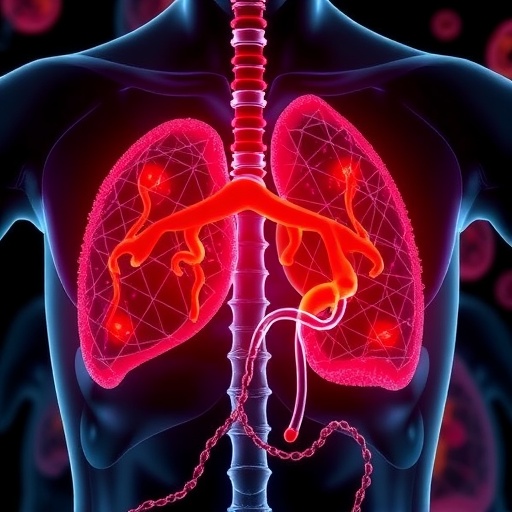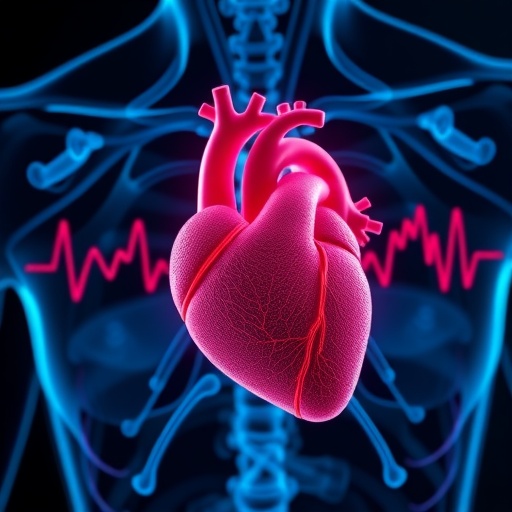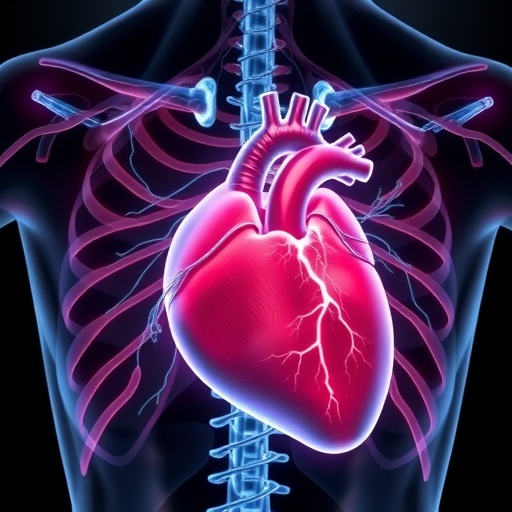In a groundbreaking development poised to revolutionize the treatment of liver injuries, scientists have engineered biosilica nanoparticulate scavengers to combat hepatic ischemia–reperfusion injury (IRI), a pervasive clinical challenge that significantly complicates liver surgeries and transplantation outcomes. This innovative nanomedicine strategy targets the oxidative stress and inflammatory cascades lying at the heart of ischemia–reperfusion injury, offering a promising therapeutic avenue where current interventions remain largely insufficient.
Hepatic ischemia–reperfusion injury arises when the blood supply to the liver is transiently interrupted and then restored, a process common during liver transplantation, resection surgeries, or shock scenarios. The sudden reoxygenation event paradoxically leads to an overwhelming burst of reactive oxygen species (ROS) production, triggering cellular damage, inflammation, and often severe organ dysfunction. Despite decades of research, effective pharmacological solutions to mitigate this reperfusion injury have eluded clinicians, underscoring the importance of novel approaches such as the one recently reported.
Central to this breakthrough is the use of biosilica-based nanoparticles. These nanostructures are derivatized silica forms synthesized through biomimetic mineralization processes, leveraging the biological production pathways found in diatoms and sponges. Their porous architecture and inherent biocompatibility make them ideal carriers and active agents for scavenging highly reactive radicals causing oxidative damage. The researchers designed these biosilica nanoparticles to act as ROS “sponges,” efficiently neutralizing harmful species before they can incite cellular injury.
.adsslot_7nC8FQtXgM{ width:728px !important; height:90px !important; }
@media (max-width:1199px) { .adsslot_7nC8FQtXgM{ width:468px !important; height:60px !important; } }
@media (max-width:767px) { .adsslot_7nC8FQtXgM{ width:320px !important; height:50px !important; } }
ADVERTISEMENT
The engineered nanoparticles exhibit several distinct advantages that underscore their therapeutic potential. Biosilica’s robust surface chemistry can be modified to enhance targeting and circulation time, while its biodegradability ensures minimal long-term toxicity. In preclinical models, these particles demonstrated remarkable efficacy in localizing to hepatic tissue undergoing reperfusion stress, where their scavenging activity drastically lowered oxidative markers and inflammatory cytokines. Such result-oriented design marks a significant leap beyond inert antioxidant therapies, which often lack tissue-specific accumulation.
Mechanistic studies revealed that these biosilica nanoparticulate scavengers interrupt the ROS-mediated signaling pathways that drive cell death and inflammation during reperfusion. By depleting excess hydroxyl radicals and superoxide anions, the nanoparticles prevent mitochondrial dysfunction—a critical early event in hepatic injury. Moreover, the particles appear to modulate immune cell activation, curtailing the recruitment and overactivation of neutrophils and macrophages that exacerbate tissue damage. This dual action both protects hepatocytes and tempers the injurious inflammatory milieu.
In vivo experiments in rodent models of liver ischemia–reperfusion injury yielded compelling data. Animals treated with biosilica nanoparticles prior to reperfusion showed dramatically improved liver function tests, reduced histological evidence of necrosis, and better overall survival compared to controls. Importantly, no adverse effects were detected, highlighting the safety profile of biosilica as a therapeutic scaffold. These findings substantially elevate the clinical translation prospects for nanoparticle-based therapies in hepatic injury management.
The implications of this research extend well beyond liver IRI. Biosilica nanoparticulate scavengers open up new horizons for treating a variety of oxidative stress-related pathologies where localized and sustained ROS neutralization is desirable. This includes myocardial infarction, stroke, and even certain neurodegenerative diseases where aberrant ROS production plays a critical role. The modularity of biosilica nanoparticle design enables adaptation for diverse clinical contexts, potentially transforming multiple fields of medicine.
One of the most exciting aspects of these nanoparticles is their biomimetic origin which aligns with sustainable and biologically harmonious therapeutic approaches. Unlike synthetic nanoparticles laden with heavy metals or complex organic compounds, biosilica offers a safer, environmentally benign alternative with straightforward scalability. This compatibility could accelerate regulatory approval and expedite the integration of these nanoparticles into clinical routines, creating a seamless interface between nature-inspired materials science and practical medicine.
The pathway from bench to bedside for biosilica nanoparticulate scavengers involves several essential steps. Scaling up production with consistent quality, optimizing dosing regimens, and conducting rigorous trials in larger animal models are next on the horizon. Additionally, further refinement of particle functionalization to enhance selective delivery, minimize off-target effects, and enable real-time monitoring of therapeutic activity will maximize clinical efficacy. Ongoing multidisciplinary collaborations are vital to navigate these challenges effectively.
From a broader scientific perspective, this study catalyzes a paradigm shift in nanomedicine by emphasizing bioinspired materials for active therapeutic functions rather than mere drug delivery vehicles. The ability of biosilica nanoparticles to directly interact with and neutralize pathological mediators such as ROS paves the way for a new class of “nanoscavengers” that can intervene in complex biochemical networks in situ. This conceptual breakthrough opens diverse opportunities for future innovation in precision medicine and pathology interception.
Furthermore, the success demonstrated in hepatic IRI models highlights the importance of addressing oxidative stress as a central target in acute organ injuries. By effectively quenching ROS bursts, tissue homeostasis can be restored prior to irreversible damage. This approach could substantially reduce morbidity associated with ischemic disorders, decrease reliance on invasive procedures, and improve patient prognoses globally. As such, it aligns with broader healthcare goals aimed at enhancing therapeutic efficacy while minimizing adverse outcomes.
The study also underscores the critical role of interdisciplinary integration, combining expertise in materials science, biomedical engineering, molecular biology, and clinical medicine. The innovations in nanoparticle synthesis and functionalization drew heavily on advanced characterization tools such as electron microscopy, spectroscopy, and in vivo imaging, enabling precise structural and functional tailoring. Such cooperative strategies exemplify modern translational research’s power to deliver transformative therapies advancing human health.
Looking ahead, the broader adoption of biosilica-based therapeutics requires strategic partnerships spanning academia, industry, and regulatory bodies. Efforts to standardize nanoparticle characterization, manufacturing processes, and safety assessment protocols will be essential to facilitate commercialization. Moreover, educating clinicians about the principles and advantages of biosilica nanomedicine will foster acceptance and appropriate application in clinical settings, ensuring these innovations translate into tangible patient benefits.
The therapeutic promise also invites ethical and socioeconomic considerations, emphasizing equitable access to advanced nanomedicine treatments. Incorporating cost-effectiveness analyses and health policy initiatives early in development can guide responsible dissemination and address disparities in healthcare delivery. Such foresight ensures that cutting-edge nanoscale therapies do not become confined to privileged populations but serve broad patient communities worldwide.
In conclusion, the advent of biosilica nanoparticulate scavengers marks a transformative milestone in the fight against hepatic ischemia–reperfusion injury. By harnessing nature’s blueprint and nanoscale engineering precision, this strategy offers robust, targeted, and safe protection against the devastating cascade of oxidative damage in liver tissues. As research propels this technology closer to clinical reality, it heralds a new era of biomaterial-enabled therapeutics poised to redefine organ injury treatment and improve millions of lives.
Subject of Research: Hepatic ischemia–reperfusion injury therapy using biosilica nanoparticles.
Article Title: Biosilica nanoparticulate scavengers for the therapy of hepatic ischemia–reperfusion injury in preclinical models.
Article References:
Zhou, B., Chen, X., Ding, R. et al. Biosilica nanoparticulate scavengers for the therapy of hepatic ischemia–reperfusion injury in preclinical models. Nat Commun 16, 7650 (2025). https://doi.org/10.1038/s41467-025-62968-4
Image Credits: AI Generated
Tags: biocompatible nanocarriersbiomimetic mineralization processesbiosilica nanoparticlesclinical challenges in liver transplantationinflammation in hepatic injuryinnovative treatments for organ dysfunctionliver ischemia-reperfusion injurynanomedicine for liver injurynanoparticle technology in medicineoxidative stress in liver damagereactive oxygen species scavengerstherapeutic strategies for liver surgery





